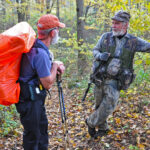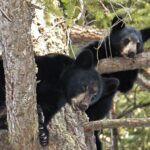The Appalachian Mountains are home to a rich diversity of plants and animals but only a few have the potential to harm you. Educate yourself about best practices to avoid negative encounters and stay safe.
Mice
Mice are famously known to inhabit many trail shelters. They flourish when hikers inadvertently feed them by dropping crumbs or spilling food when they cook in shelters.
The most commons species of mice on the Appalachian Trail are the White Footed Mouse and the Deer Mouse. Wood rats (larger than mice but generally smaller than their urban counterparts) inhabit the Appalachian Mountains but are not seen as often as mice.
These small rodents may appear harmless, but they are responsible for transmitting illnesses.
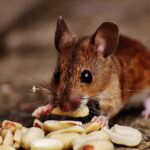
Diseases transmitted by mice
Lyme disease and other tick-borne diseases
Mice are hosts for ticks which can carry several diseases that can be very serious if not treated. Read more about tick-borne illnesses and how to prevent them here.
Hantavirus
Although cases of Hantavirus are extremely rare (only one person is known to have become ill on the A.T.) mice can transmit this potentially fatal disease through their droppings, urine, or saliva. Take precautionary measures to avoid exposure to Hantavirus, such as:
- Check potential campsites for rodent droppings and burrows.
- Avoid sleeping on bare ground or directly on shelter floors (use a tent or a mat)
- If you clean an area with mouse droppings, it is important that you do not stir up dust by sweeping up droppings, urine, or nesting materials. Additional precautions are needed to stay safe when cleaning up rodent droppings or waste.
- Store foods in rodent-proof containers; using bear canisters can protect your food from a variety of critters
- Air out a closed, mice-infested structure for at least 30 minutes with cross-ventilation before occupying it.
- Treat your water, and wash hands.
Snakes
Numerous snakes inhabit the trail corridor and may be present in warm weather. Only two species are venomous. They are generally passive but may bite defensively if they feel threatened. Watch where you step and where you put your hands. Snakes may be active at night in very hot weather, so use a flashlight and wear shoes. Snakes are an important part of a healthy ecosystem – please don’t kill them!
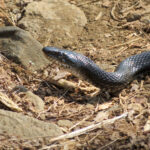
Venomous Snakes
Snake bites are rare, and bites from venomous snakes do not always contain venom. Very few people die from snakebites in the U.S. The two venomous snakes that may be found on the A.T. are both pit vipers. They have triangular heads that are wide than the rest of their necks and pupils that are slit rather than round. They generally have thicker bodies than most other snakes.
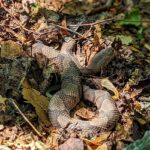
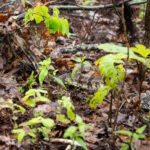
If you are bitten by a snake you believe to be venomous:
- Try to remain calm.
- Call 911 and seek medical treatment as quickly as possible. In the backcountry, this may mean walking out to a trailhead instead of waiting for emergency personnel to reach you.
- Wash the wound with soap and water.
- Do not apply ice.
- Do not apply a tourniquet.
- Remove rings or other jewelry that could function as a tourniquet if swelling occurs.
- Do not use a “cut and suck” method to try and remove venom.
U.S. Forest Service Guidance on Snake Bites CDC Guidance on Snake Bite Symptoms
Spiders
Spiders are not aggressive but may bite when trapped or touched. Be careful around wood piles and other dark, dry places, particularly inside privies. Check toilet seats before using them. Inspect footwear and clothing for spiders and shake them out before putting them on, especially if left outside overnight.
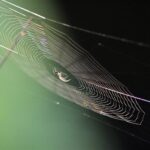
Venomous Spiders
There are two types of venomous spiders on the A.T. They are rarely seen on the A.T., but both can cause bites that can be serious.
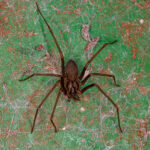
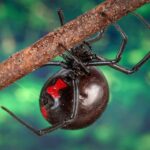
Symptoms of a spider bite include:
- Itching or rash
- Pain radiating from the site of the bite
- Muscle pain or cramping
- Reddish to purplish color or blister
- Increased sweating
- Difficulty breathing
- Headache
- Nausea and vomiting
- Fever
- Chills
- Anxiety or restlessness
- High blood pressure
What to do if you are bitten:
- Stay calm. Identify the type of spider if it is possible to do so safely. Identification will aid in medical treatment.
- Wash the bite area with soap and water.
- Apply a cloth dampened with cold water or filled with ice to the bite area to reduce swelling.
- Elevate bite area if possible.
- Do not attempt to remove venom.
- Seek medical treatment.
Sometimes a MRSA infection may be mistaken for a venomous spider bite.
CDC Guidance on Spider BitesStinging Insects
Wasps, Bees, hornets and yellow jackets are types of flying insects that are found along the A.T. and can sting you; hornets and yellow jackets are actually types of wasps.
Stinging insects are most abundant in the warmer months. Yellow jackets are the type most likely to be encountered in multiple numbers by hikers because they make their nests on the ground and may occasionally be encountered on the Trail, most often in August or September but they can be present until the first frost.
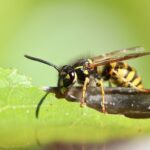
Tips:
- Avoid products with perfumes or scents
- Avoid wearing brightly colored clothing.
- Keep an eye out for even a single bee flying to or from a hole in the ground; it can signal a nest of hundreds
- Remain calm and still if a single stinging insect is flying around. (Swatting at an insect may cause it to sting.)
- If you are attacked by several stinging insects at once, cover your face, and move quickly to get away from them, but not so hastily that you risk a fall or injury. (Bees release a chemical when they sting, which may attract other bees.)
- Hikers with a history of severe allergic reactions to insect bites or stings should consider carrying an epinephrine auto injector (EpiPen) and should wear a medical identification bracelet or necklace stating their allergy.
Adapted from the Centers for Disease Control.
CDC Guidance on Bees, Wasps, & HornetsPoisonous Plants
Two poisonous plants can be found along the A.T.
Poison Ivy
Poison ivy grows along many parts of the A.T. (except the highest elevations of the South and higher elevations in northern New England) and can cause considerable discomfort if you have touched it. Learning to recognize it is the best way to avoid contact.
The leaves are in clusters of three, the end leaf with a longer stalk and pointed tip. Poison ivy is most often seen as a vine trailing near the ground or climbing trees, sometimes with a thick, hairy stalk. The vine can send out horizontal limbs from a vine that at first glance appears to be the lowest branches of the tree.
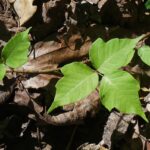
Poison Ivy
Poison Oak
Poison oak is fairly common along the A.T. from Georgia through Virginia, especially on disturbed south and west facing slopes. The appearance is similar to poison ivy but the leaves are rounded and it usually takes the form of a shrub.
If you have touched poison ivy or poison oak:
- Wash immediately with cold water (it’s important to not use hot water) and strong soap that does not contain added oil.
- If a rash develops in the next few days, apply over-the-counter products from a pharmacy to minimize discomfort. It usually takes several days for the blisters to disappear.
- Do not scratch.
- If blisters become serious or the rash spreads to the eyes, see a doctor.
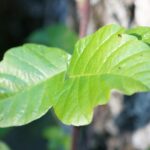
Poison Oak
Mosquitoes
Mosquitoes are best known for being a nuisance, creating welts that itch for days. However, they can also carry a variety of diseases.
West Nile virus (WNV) is the leading cause of mosquito-borne disease in the continental United States. It is most commonly spread to people by the bite of an infected mosquito. Cases of WNV occur during mosquito season, which starts in the summer and continues through fall. There are no vaccines to prevent or medications to treat WNV in people. Fortunately, most people infected with WNV do not feel sick. About 1 in 5 people who are infected develop a fever and other symptoms. About 1 out of 150 infected people develop a serious, sometimes fatal, illness. You can reduce your risk of WNV by using insect repellent and wearing long-sleeved shirts and long pants to prevent mosquito bites.
Adapted from the Centers for Disease Control and Prevention.
Animals Carrying Rabies
Cases of rabies have been reported in foxes, raccoons, skunks and other small animals including bats.
Although instances of hikers being bitten by rabid animals are rare, any animal bite is a serious concern. If you are bitten by an animal, wash the wound thoroughly with soap and water and seek medical assistance.
CDC Guidance on Rabies


